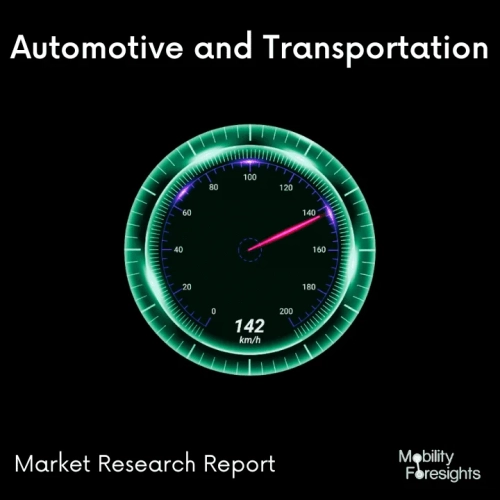
- Get in Touch with Us

Last Updated: Apr 25, 2025 | Study Period:
The automotive logistics market in Thailand is a vital sector supporting the country's status as a leading automotive manufacturing hub in Southeast Asia. The market encompasses the transportation, warehousing, and distribution of automotive components and finished vehicles, both domestically and for export.
Thailandâs automotive logistics market is growing steadily due to the country's strong automotive industry. The market benefits from increased vehicle production, a growing automotive parts supply chain, and robust export activities. Thailandâs geographic location serves as a strategic gateway for regional logistics, connecting major markets in Southeast Asia. This strategic advantage bolsters its role in the global automotive supply chain.
The Thai government is investing heavily in infrastructure to enhance logistics efficiency. Key projects include the Eastern Economic Corridor (EEC), which aims to improve transportation networks, logistics hubs, and industrial zones, facilitating smoother and faster movement of automotive goods. The industry is seeing increased adoption of advanced technologies such as IoT, automation, and data analytics. These technologies are enhancing supply chain visibility, improving inventory management, and streamlining operations.
The growth of e-commerce is driving changes in logistics requirements, particularly for automotive parts and accessories. This shift is leading to innovations in last-mile delivery solutions and digital logistics platforms. There is a rising emphasis on sustainability within the sector. Companies are adopting eco-friendly practices, including electric vehicles and green logistics solutions, to reduce environmental impact. The market faces regulatory challenges, including compliance with both local and international standards, which impact operational efficiency and costs.
Thailandâs automotive logistics market is evolving with strategic infrastructure developments, technological advancements, and a focus on sustainability, while navigating regulatory and competitive dynamics.
The Thailand automotive logistics market is a critical element of the countryâs thriving automotive industry, which is a major player in Southeast Asia. As a significant manufacturing and export hub, Thailandâs automotive logistics sector is essential for efficiently managing the supply chain of automotive components and finished vehicles.

Thailand stands out as a prominent automotive manufacturing center in Southeast Asia, with a well-established infrastructure supporting its expansive automotive sector. The automotive logistics market in Thailand encompasses a range of services including transportation, warehousing, distribution, and supply chain management tailored to the automotive industry.
The sector benefits from Thailandâs strategic location, which serves as a gateway for regional and global markets. This position enhances its role in international automotive supply chains, facilitating the movement of parts and vehicles across borders. Major investments in infrastructure, such as the Eastern Economic Corridor (EEC), are further boosting logistics capabilities by improving transportation networks and establishing state-of-the-art logistics hubs.
Technological advancements are reshaping the logistics landscape, with the adoption of automation, real-time tracking, and data analytics improving operational efficiency and transparency. The rise of e-commerce is also influencing the logistics sector, particularly for the distribution of automotive parts and accessories, leading to innovations in delivery solutions.
Sustainability is becoming increasingly important, with a growing focus on green logistics practices to reduce environmental impact. Companies are adopting eco-friendly technologies and optimizing their supply chains to meet sustainability goals.
The Thailand automotive logistics market is a dynamic and evolving sector, driven by infrastructure development, technological progress, and a commitment to sustainability while addressing the challenges of regulatory compliance and competitive pressures.
The Thailand automotive logistics market is evolving rapidly, influenced by several key trends that reflect broader shifts in the industry.
Significant investments in infrastructure, particularly through projects like the Eastern Economic Corridor (EEC), are enhancing logistics capabilities. Improvements in highways, ports, and logistics hubs are streamlining transportation and reducing delivery times. The integration of advanced technologies is transforming logistics operations. Innovations such as real-time tracking systems, automation in warehouses, and data analytics are optimizing supply chain management, improving efficiency, and enhancing visibility throughout the logistics network.
The rise of e-commerce is reshaping logistics needs, particularly for automotive parts and accessories. This trend is driving the development of advanced last-mile delivery solutions and digital platforms to meet increasing demand for rapid and reliable delivery services. There is a growing emphasis on sustainability within the automotive logistics sector. Companies are adopting green logistics practices, such as using electric vehicles and optimizing routes to reduce carbon footprints. Sustainable practices are becoming integral to corporate strategies as environmental regulations tighten and consumer expectations shift.
The logistics sector is navigating a complex regulatory landscape. Changes in trade policies, environmental regulations, and transportation laws require companies to adapt their operations to ensure compliance and maintain efficiency. Recent global disruptions have underscored the importance of resilient supply chains. Companies are focusing on diversifying supply sources, improving inventory management, and building more flexible logistics networks to mitigate risks and enhance responsiveness.
These trends highlight the dynamic nature of Thailand's automotive logistics market, driven by technological innovation, infrastructure development, and a commitment to sustainability, while addressing regulatory and operational challenges.
New product development in Thailandâs automotive logistics market is driven by technological advancements, changing market demands, and sustainability concerns.
New integrated logistics platforms are being introduced, leveraging artificial intelligence and big data analytics to optimize supply chain management. These platforms offer features like real-time tracking, predictive maintenance, and automated decision-making, improving overall efficiency and visibility. The development of electric and autonomous vehicles is gaining traction in logistics. Electric trucks are being introduced to reduce emissions, while autonomous delivery vehicles and drones are being explored to enhance last-mile delivery efficiency and address urban congestion.
Innovations in warehousing are focused on automation, with the introduction of robotic systems for storage and retrieval, automated sorting, and inventory management. These solutions enhance operational efficiency, reduce errors, and speed up order fulfillment. New products are emerging in sustainable packaging, including biodegradable materials and reusable packaging solutions. These innovations align with the growing emphasis on reducing environmental impact and meet regulatory and consumer demands for greener practices.
To address the challenges of last-mile delivery, companies are developing smart solutions such as delivery lockers, automated parcel stations, and route optimization software. These products aim to enhance delivery speed, accuracy, and customer satisfaction. Blockchain technology is being integrated to provide secure and transparent supply chain tracking. This technology helps in verifying the authenticity of parts, reducing fraud, and improving overall supply chain integrity.
These new product developments reflect Thailand's automotive logistics market's dynamic response to technological advancements, environmental concerns, and evolving consumer expectations, positioning it for future growth and efficiency.
| Sl no | Topic |
| 1 | Market Segmentation |
| 2 | Scope of the report |
| 3 | Research Methodology |
| 4 | Executive summary |
| 5 | Key Predictions of the Thailand Automotive Logistics Market |
| 6 | Avg B2B price of Thailand Automotive Logistics Market, By Region |
| 7 | Major Drivers For Thailand Automotive Logistics Market |
| 8 | Thailand Automotive Logistics Market Production Footprint - 2023 |
| 9 | Technology Developments In Thailand Automotive Logistics Market |
| 10 | New Product Development In Thailand Automotive Logistics Market |
| 11 | Research focus areas on new Thailand Automotive Logistics |
| 12 | Key Trends in the Thailand Automotive Logistics Market |
| 13 | Major Projects Utilizing Thailand Automotive Logistics |
| 14 | Market Size, Dynamics And Forecast, By Geography, 2024-2030 |
| 15 | Market Size, Dynamics And Forecast, By Type of Service, 2024-2030 |
| 16 | Market Size, Dynamics And Forecast, By Vehicle Type, 2024-2030 |
| 17 | Market Size, Dynamics And Forecast, By Logistics Function, 2024-2030 |
| 18 | Competitive Landscape Of Thailand Automotive Logistics Market |
| 19 | Mergers and Acquisitions |
| 20 | Competitive Landscape |
| 21 | Growth strategy of leading players |
| 22 | Market share of vendors, 2023 |
| 23 | Company Profiles |
| 24 | Unmet needs and opportunity for new suppliers |
| 25 | Conclusion |